Using RISKPLAN for Earthquake Risk Assessment in Sichuan Province, China
Abstract
1. Introduction
2. Materials and Methods
2.1. Research Region
2.2. Data on the History of Earthquakes in Sichuan Province
- The lower limit of an earthquake magnitude is set at Ms = 6.5 [40], a level where the destructive extent of earthquakes starts to be significant;
- In order to discern the main behavior of strong earthquake recurrence, the foreshocks and aftershocks were not treated as independent events; and
- If the earthquakes in any of the above seismic zones occurred outside Sichuan Province, it would be not included in this study; likewise, any damages from an earthquake would be taken into account only if they happened inside Sichuan Province.
2.3. Method and History of RISKPLAN
- definition of the assessment area (system) with the hazards to be analyzed and the persons and material assets at risk from these hazards (damage potential);
- definition or estimation, calculation, and presentation of the risks posed by these hazards (initial situation);
- identification and definition of possible measures and packages of measures in the assessment area; and
- estimation, calculation, and presentation of the risks following the implementation of measures and the calculation and assessment of their cost-effectiveness.
3. Application of RISKPLAN for Sichuan Earthquake Risk Assessment
3.1. Definition of Scenarios and Recurrence Intervals
3.2. Exposure and Probability of Exposure
- The amount of time people spend working is considered to be eight hours per day plus two hours for commuting. The amount of daytime is assumed to be 10 h, while nighttime is taken as 14 h. Therefore, daytime accounts for 41.57% of one day and nighttime accounts for 58.33%.
- Daytime is divided into two categories: daytime on workdays and daytime on weekends and holidays. During the week, people will work indoors during eight hours and commute outdoors for about two hours. The probability that people are indoors on workdays at daytime is 80%, while that of being outdoors is 20%. For daytime on weekends and holidays, people are assumed to be indoors or outdoors at 50%.
- At night, most people will be indoors, no matter whether it is a workday or weekend, or holiday. Generally, when people are indoors at nighttime, they will take more time to respond to an abrupt earthquake disaster than during the daytime.
- National legal holidays in China comprise New Year’s Day (1 day), Spring Festival or Lunar New Year Holiday (3 days), Tomb-sweeping Day (1 day), International Labor Day (1 day), Dragon Boat Festival (1 day), Mid-autumn Festival (1 day), and National Day (3 days), adding up to 11 days per year. As there are 52 weeks in a year, and a weekend has two holidays, Saturday and Sunday, that makes 104 days a year. In all, there are 115 days of weekends and holidays a year in China and that accounts for 31.5%, while that of workdays accounts for 68.5%.
- Normal course: people are outdoors during daytime; warnings and evacuations are successful, and probability of exposure and risk is lower
- Unfavorable course: people are indoors at daytime; warning and evacuation are only partly successful, resulting in an increased probability of exposure and increased risk
- Disastrous course: people are indoors at nighttime; warning and evacuation fail, leading to a higher probability of exposure and higher risk
3.3. Defining the Extent of Damages
3.4. Definition of Risk Reduction and Mitigation Measures
- The lifecycle of each measure is assumed to be 30 years, which corresponds to the average service life of each measure;
- The annual maintenance and operating costs account for 50% of the total depreciation expense, respectively;
- The depreciation rate is calculated by the reciprocal value of anticipated service life (30 years in this study) multiplied by 100%, that is 3.33%.
4. Study Results
4.1. Earthquake Risk in Sichuan Province
4.2. Cost-Effectiveness of Reduction and Mitigation Measures
5. Discussion and Conclusions
Author Contributions
Funding
Acknowledgments
Conflicts of Interest
References
- Zheng, T.Y.; Zheng, Y. Review of earthquake damage losses in mainland China in 2011. J. Nat. Disasters 2012, 21, 88–97. (In Chinese) [Google Scholar]
- Chen, T.; Zheng, T.Y. Review of Earthquake Damage Losses in Mainland China in 2015. J. Catastrophol. 2016, 31, 133–137. (In Chinese) [Google Scholar]
- Lin, X.Y.; Zheng, T.Y.; Wen, X.T. Review of Earthquake Losses in Mainland China in 2017. J. Inst. Disaster Prev. 2018, 20, 52–58. (In Chinese) [Google Scholar]
- United Nations Office for Disaster Risk Reduction (UNISDR); Centre for Research on the Epidemiology of Disasters (CRED). Economic Losses, Poverty and Disasters 1998–2017; UNISDR: Geneva, Switzerland, 2018; pp. 6–13. [Google Scholar]
- Qiu, T. General Reinsurance (GenRe), Shanghai. A Decade of Direct Economic Losses from NatCat Perils in China: What Does the Future Hold? 2017. Available online: http://media.genre.com/documents/pmint1709-2-en.pdf (accessed on 12 November 2018). (In Chinese).
- Ministry of Natural Resources of the People’s Republic of China (MNRPRC). China’s Major Seismic Zones. 2010. Available online: http://www.mlr.gov.cn/wskt/zykx/201004/t20100415_715225.htm (accessed on 18 September 2018). (In Chinese)
- United Nations Office for Disaster Risk Reduction (UNISDR). Making Development Sustainable: The Future of Disaster Risk Management; 2015 Global Assessment Report on Disaster Risk Reduction; UNISDR: Geneva, Switzerland, 2015. [Google Scholar]
- Thomalla, F.; Boyland, M.; Johnson, K.; Ensor, J.; Tuhkanen, H.; Swartling, Å.G.; Han, G.Y.; Forrester, J.; Wahl, D. Transforming development and disaster risk. Sustainability 2018, 10, 1458. [Google Scholar] [CrossRef]
- United Nations Office for Disaster Risk Reduction (UNISDR). Sendai Framework for Disaster Risk Reduction 2015–2030; UNISDR: Geneva, Switzerland, 2015. [Google Scholar]
- Allen, S.K.; Barros, V.; Burton, I.; Campbell-Lendrum, D.; Cardona, O.-D.; Cutter, S.L.; Dube, O.P.; Ebi, K.L.; Field, C.B.; Handmer, J.W.; et al. Section II: Summary for Policymakers. In Managing the Risks of Extreme Events and Disasters to Advance Climate Change Adaptation. A Special Report of Working Groups I and II of the Intergovernmental Panel on Climate Change (IPCC); Field, C.B., Barros, V., Stocker, T.F., Qin, D., Dokken, D.J., Ebi, K.L., Mastrandrea, M.D., Mach, K.J., Plattner, G.-K., Allen, S.K., et al., Eds.; Cambridge University Press: Cambridge, UK; New York, NY, USA, 2012; p. 5. ISBN 978-1-107-02506-6. [Google Scholar]
- United Nations Office for Disaster Risk Reduction (UNISDR). Terminology on Disaster Risk Reduction; UNISDR: Geneva, Switzerland, 2009; pp. 9–30. [Google Scholar]
- Burton, C.G.; Silva, V. Assessing Integrated Earthquake Risk in OpenQuake with an Application to Mainland Portugal. Earthq. Spectra 2016, 32, 1383–1403. [Google Scholar] [CrossRef]
- Corbane, C.; Hancilar, U.; Ehrlich, D.; De Groeve, T. Pan-European seismic risk assessment: A proof of concept using the Earthquake Loss Estimation Routine (ELER). Bull. Earthq. Eng. 2017, 15, 1057–1083. [Google Scholar] [CrossRef]
- Erdik, M. Earthquake risk assessment. Bull. Earthq. Eng. 2017, 15, 5055–5092. [Google Scholar] [CrossRef]
- Abrahamson, N. Seismic hazard assessment: Problems with current practice and future developments. In Proceedings of the 1st European conference on earthquake engineering and seismology, Geneva, Switzerland, 3–8 September 2006. [Google Scholar]
- Crowley, H. Earthquake Risk Assessment: Present Shortcomings and Future Directions. In Perspectives on European Earthquake Engineering and Seismology; Ansal, A., Ed.; Springer: Cham, Germany, 2014; Geotechnical, Geological and Earthquake Engineering; Volume 34, pp. 515–532. ISBN 978-3-319-07117-6. [Google Scholar]
- United Nations Office for Disaster Risk Reduction (UNISDR). Words into Action Guidelines: National Disaster Risk Assessment; UNISDR: Geneva, Switzerland, 2017. [Google Scholar]
- Cornell, C.A. Engineering seismic risk analysis. Bull. Seism. Soc. Am. 1968, 58, 1583–1606. [Google Scholar]
- Silva, V. Critical issues on probabilistic earthquake loss assessment. J. Earthqu. Eng. 2018, 22, 1683–1709. [Google Scholar] [CrossRef]
- Ministry of Housing and Urban-Rural Development of the People’s Republic of China (MOHURD). GB 50011-2010 Code for Seismic Design of Buildings; China Architecture & Building Press: Beijing, China, 2010; p. 146. ISBN 1511228896. (In Chinese) [Google Scholar]
- China Earthquake Administration (CEA). GB18306-2015 Seismic Ground Motion Parameters Zonation Map of China; Standards Press of China: Beijing, China, 2016; p. 2. ISBN 155066.1-51970. (In Chinese) [Google Scholar]
- Yepes-Estrada, C.; Silva, V.; Valcarcel, J.; Acevedo, A.B.; Tarque, N.; Hube, M.A.; Coronel, G.; Santa Maria, H. Modeling the residential building inventory in South America for seismic risk assessment. Earthq. Spectra 2017, 33, 299–322. [Google Scholar] [CrossRef]
- Bal, İ.E.; Crowley, H.; Pinho, R.; Gülay, F.G. Detailed assessment of structural characteristics of Turkish RC building stock for loss assessment models. Soil Dyn. Earthq. Eng. 2008, 28, 914–932. [Google Scholar] [CrossRef]
- Maio, R.; Ferreira, T.M.; Vicente, R.; Estêvão, J. Seismic vulnerability assessment of historical urban centres: Case study of the old city centre of Faro, Portugal. J. Risk Res. 2016, 19, 551–580. [Google Scholar] [CrossRef]
- Federal Emergency Management Agency (FEMA). Using HAZUS-MH for Risk Assessment; HAZUS-MH Risk Assessment and User Group Series; FEMA: Washington, DC, USA, 2004.
- Bruendl, M.; Romang, H.E.; Bischof, N.; Rheinberger, C.M. The risk concept and its application in natural hazard risk management in Switzerland. Nat. Hazards Earth Syst. Sci. 2009, 9, 801–813. [Google Scholar] [CrossRef]
- Lv, D.G.; Liu, T.T.; Li, S.Y.; Jia, X.L.; Pang, J.; Yu, X.H. Probabilistic seismic hazard analysis, deaggregation and scenario earthquakes with applications to Xi’an region. Earthq. Eng. Eng. Dyn. 2018, 38, 12–21. (In Chinese) [Google Scholar]
- Lin, S.B.; Xie, L.L.; Gong, M.S.; Li, M. Methodology for estimating seismic capacity of city building. J. Nat. Disasters 2011, 20, 31–37. (In Chinese) [Google Scholar]
- Wu, W.P.; Li, L.F.; Hu, S.C.; Xu, Z.J. Research review and future prospect of the seismic fragility analysis for the highway bridges. Earthq. Eng. Eng. Dyn. 2017, 37, 85–96. (In Chinese) [Google Scholar]
- Nie, G.Z.; Gao, J.G.; Ma, Z.J.; Gao, Q.H.; Su, G.W. On the risk of earthquake disaster in China in the coming 10–15 years. J. Nat. Disasters 2002, 11, 68–73. (In Chinese) [Google Scholar]
- Wen, J.H.; Yan, J.P.; Yin, Z.E.; Meng, Q.J.; Ye, X.L. Mainstreaming Disaster Risk Management in China. Prog. Geogr. 2010, 29, 771–777. (In Chinese) [Google Scholar]
- Wang, X.; Zhou, H.J. Scenario analysis of regional annual earthquake disaster risk assessment. J. Catastrophol. 2015, 30, 70–74. (In Chinese) [Google Scholar]
- Li, M.; Zou, Z.H.; Shi, P.J.; Wang, J.A. World earthquake disaster risk assessment. J. Nat. Disasters 2015, 24, 1–11. (In Chinese) [Google Scholar]
- Sichuan Provincial People’s Government (SPPG). The Basic Situation of Sichuan Province. Available online: http://www.sc.gov.cn/10462/wza2012/scgk/scgk.shtml (accessed on 19 September 2018). (In Chinese)
- Sichuan Provincial Bureau of Statistics (SPBS). 2017 National Economy and Social Development Statistical Bulletin of Sichuan Province. Available online: http://www.sc.stats.gov.cn/sjfb/tjgb/201802/t20180228_254426.html (accessed on 6 October 2018). (In Chinese)
- Qu, Z.J. Historical Seismic Zones in Sichuan Province. J. Lit. Hist. 2008, 4, 106–108. (In Chinese) [Google Scholar]
- Tang, R.C.; Wen, D.H.; Huang, Z.Z.; Wu, X.G.; Lin, W.F.; Chen, G.X.; Wu, G. The Quaternary Activity Characteristics Several Major Active Faults in the Songpan-Longmenshan Region. Earthq. Res. China 1991, 7, 64–71. (In Chinese) [Google Scholar]
- Jiang, M.X. The Series of Large Earthquakes in the Chinese Longmenshan Mountain. J. Inst. Disaster-Prev. Sci. Technol. 2009, 11, 133–135. (In Chinese) [Google Scholar]
- Wen, X.Z.; Yi, G.X. Re-zoning of statistic units of seismicity in Sichuan-Yunnan region. J. Seismol. Res. 2003, 26, 1–9. (In Chinese) [Google Scholar]
- Yi, G.X.; Wen, X.Z.; Xu, X.W. Study on recurrence behaviors of strong earthquakes for several entireties of active fault zones in the Sichuan-Yunnan region. Earthq. Res. China 2002, 18, 267–276. (In Chinese) [Google Scholar]
- Lou, B.T. Compilation of Ancient and Modern Earthquake Disasters in China; Seismological Press: Beijing, China, 1996; ISBN 9787502813093. (In Chinese) [Google Scholar]
- China Earthquake Administration (CEA). 2008 China’s Land Seismic Disaster Losses Review. Available online: http://www.cea.gov.cn/publish/dizhenj/468/549/20120209143200890980157/index.html (accessed on 20 September 2018). (In Chinese)
- Pielke, R.A.; Rubiera, J.; Landsea, C.; Fernandez, M.L.; Klein, R. Hurricane vulnerability in Latin America and the Caribbean: Normalized damage and loss potentials. Nat. Hazards Rev. 2003, 4, 101–114. [Google Scholar] [CrossRef]
- Vranes, K.; Pielke, R. Normalized earthquake damage and fatalities in the United States: 1900–2005. Nat. Hazards Rev. 2009, 10, 84–101. [Google Scholar] [CrossRef]
- Daniell, J.E.; Wenzel, F.; Khazai, B. The Normalisation of socio-economic losses from historic worldwide earthquakes from 1900 to 2012. In Proceedings of the 15th World Conference on Earthquake Engineering (15WCEE), Lisbon, Portugal, 24–28 September 2012. Paper No. 2027. [Google Scholar]
- Sichuan Provincial Bureau of Statistics (SPBS); Sichuan Provincial Bureau of Statistics and National Bureau of Statistics Survey Office in Sichuan (NBSSOS). Sichuan Statistical Yearbook 2005; China Statistics Press: Beijing, China, 2005. (In Chinese)
- Department of Comprehensive Statistics of National Bureau of Statistics (DCSNBS). China Compendium of Statistics 1949–2008; China Statistics Press: Beijing, China, 2010; ISBN 978-7-5037-5894-2. (In Chinese)
- Sichuan Provincial Bureau of Statistics (SPBS). 2009–2016 National Economy and Social Development Statistical Bulletin of Sichuan Province. Available online: http://www.sc.stats.gov.cn/sjfb/tjgb/index.html (accessed on 6 October 2018). (In Chinese)
- Sichuan Provincial Bureau of Statistics (SPBS); Sichuan Provincial Bureau of Statistics and National Bureau of Statistics Survey Office in Sichuan (NBSSOS). Sichuan Statistical Yearbook 2017; China Statistics Press: Beijing, China, 2017. (In Chinese)
- Greminger, P.J.; Balmer, J.; Federal Office for the Environment (FOEN); Federal Office for Civil Protection (FOCP). RiskPlan–Identify and Assess Risks, Planning of Safety Measures. Available online: www.riskplan.admin.ch (accessed on 21 September 2018).
- Sieh, K.E. A review of geological evidence for recurrence times of large earthquakes. In Earthquake Prediction: An International Review; Maurice Ewing Series; Simpson, W., Rechard, G., Eds.; American Geophysical Union: Washington, DC, USA, 1981; Volume 4, pp. 181–207, ISBN-10: 0875904033. [Google Scholar]
- Abaimov, S.G.; Turcotte, D.L.; Shcherbakov, R.; Rundle, J.B.; Yakovlev, G.; Goltz, C.; Newman, W.I. Earthquakes: Recurrence and Interoccurrence Times. Pure Appl. Geophys. 2008, 165, 777–795. [Google Scholar] [CrossRef]
- Chen, P.S.; Bai, T.X.; Li, B.K. b-Value and Earthquake Occurrence Period. Chin. J. Geophys. 2003, 46, 510–519. (In Chinese) [Google Scholar] [CrossRef]
- Wenzel, F. Earthquake risk reduction: Obstacles and opportunities. Eur. Rev. 2006, 14, 221–231. [Google Scholar] [CrossRef]
- Peduzzi, P.; Dao, H.; Herold, C.; Mouton, F. Assessing global exposure and vulnerability towards natural hazards: The Disaster Risk Index. Nat. Hazards Earth Syst. Sci. 2009, 9, 1149–1159. [Google Scholar] [CrossRef]
- Zhang, J.Q.; Okada, N.; Tatano, H. Integrated natural disaster risk management: Comprehensive and integrated model and Chinese strategy choice. In Proceedings of the Fifth Annual IIASA-DPRI Forum on Integrated Natural Disaster Risk Management, Beijing, China, 14–18 September 2005; pp. 115–128. [Google Scholar]
- Sichuan Invested Nearly 30 Billion Chinese Yuan to Enhance Disaster Response Capabilities. Available online: http://www.chinanews.com/gn/2012/03-01/3710709.shtml (accessed on 6 October 2018). (In Chinese).
- Mei, Q.; Lu, Y.M. Assessment of the Value of Life Based on Conditional Value Method. Manag. World 2008, 6, 174–175. (In Chinese) [Google Scholar] [CrossRef]
- Olson, D.L.; Wu, D.D. Earthquakes and risk management in China. Hum. Ecol. Risk Assess. 2010, 16, 478–493. [Google Scholar] [CrossRef]
- Wang, Z.M. Seismic hazard assessment: Issues and alternatives. Pure Appl. Geophys. 2011, 168, 11–25. [Google Scholar] [CrossRef]
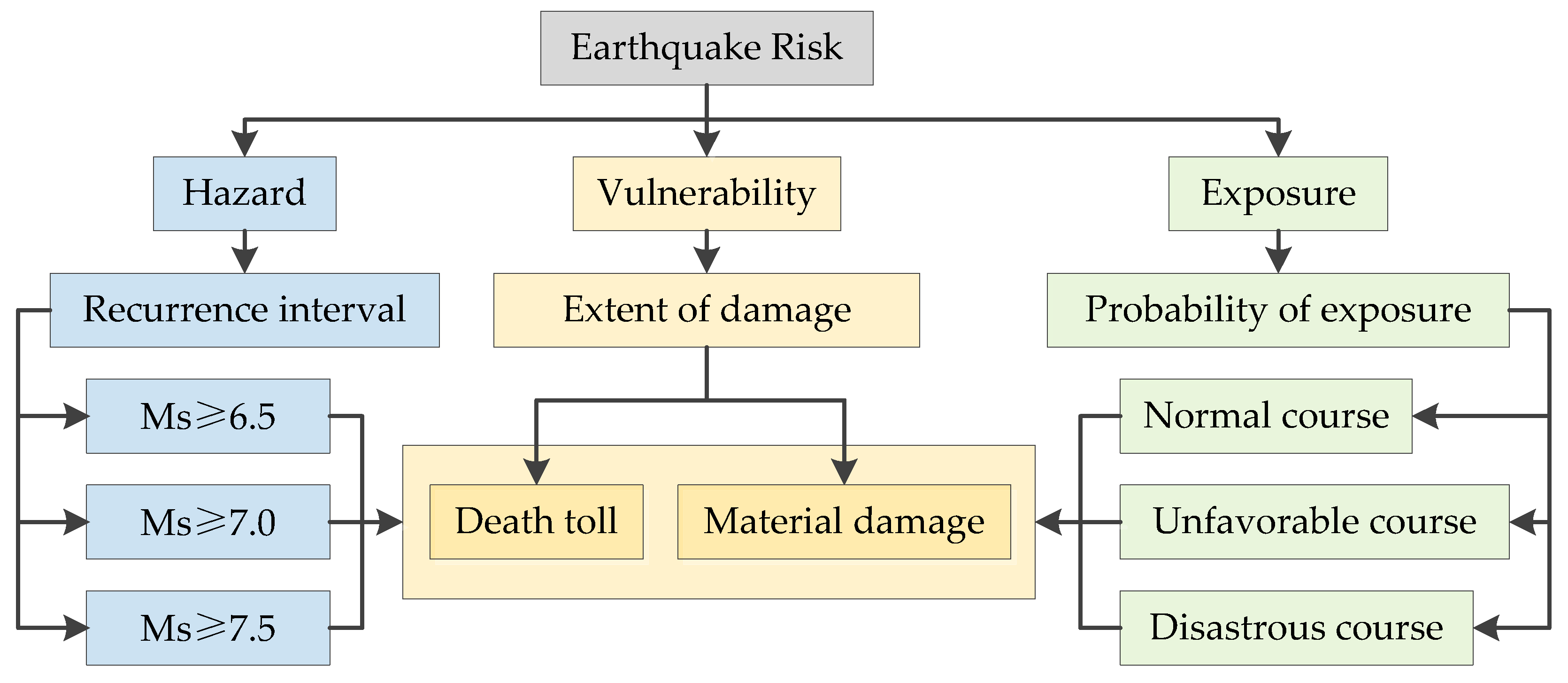
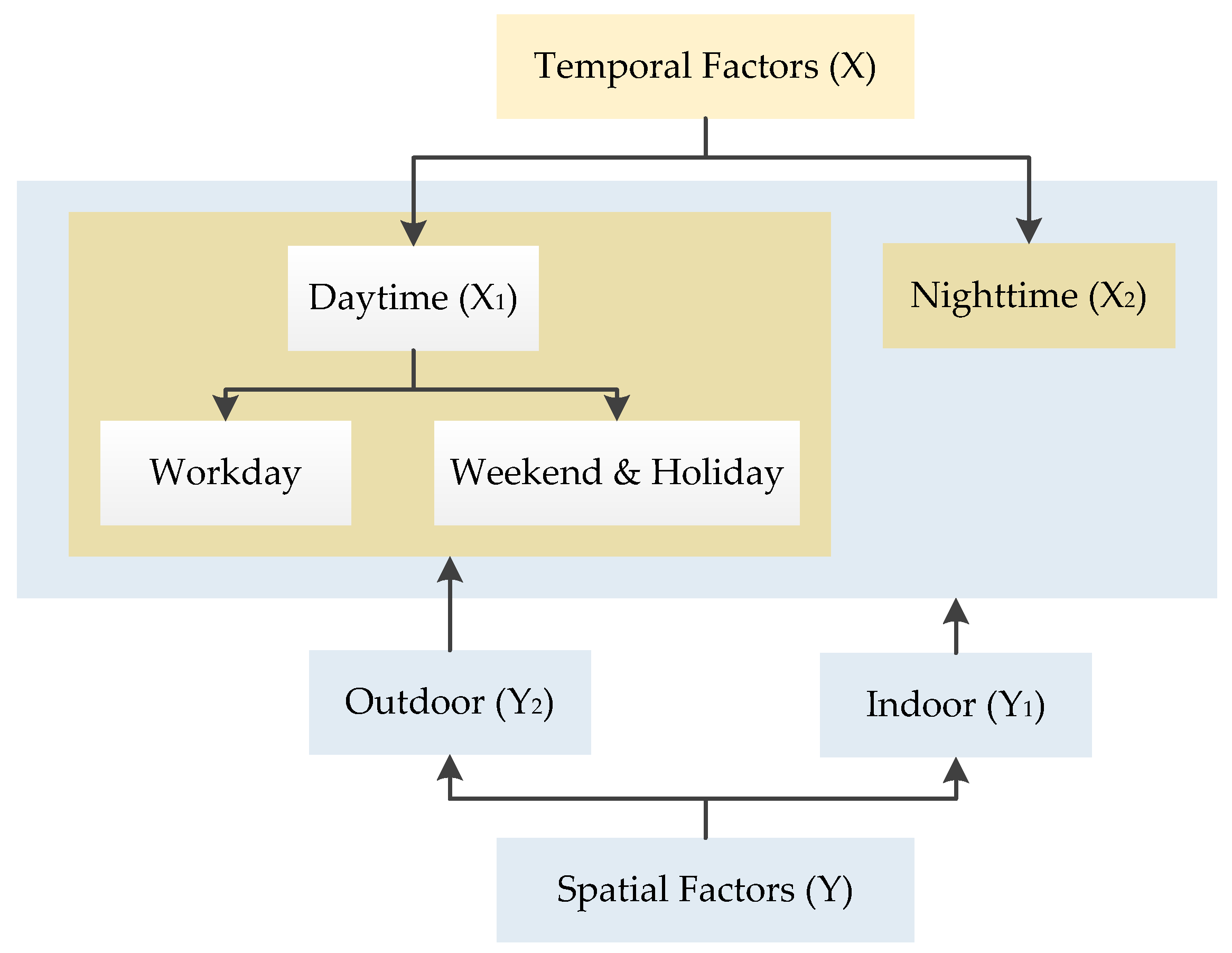
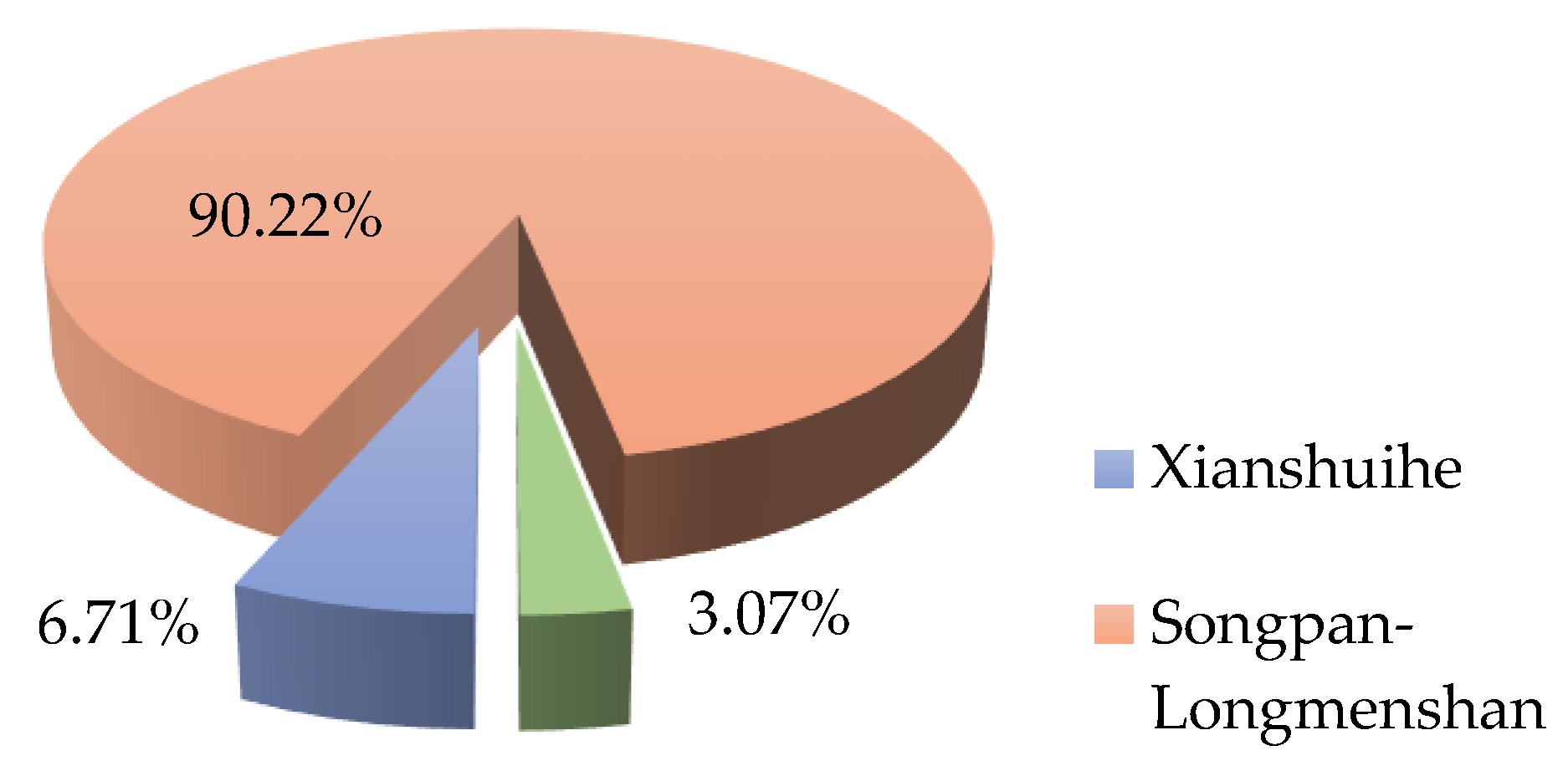
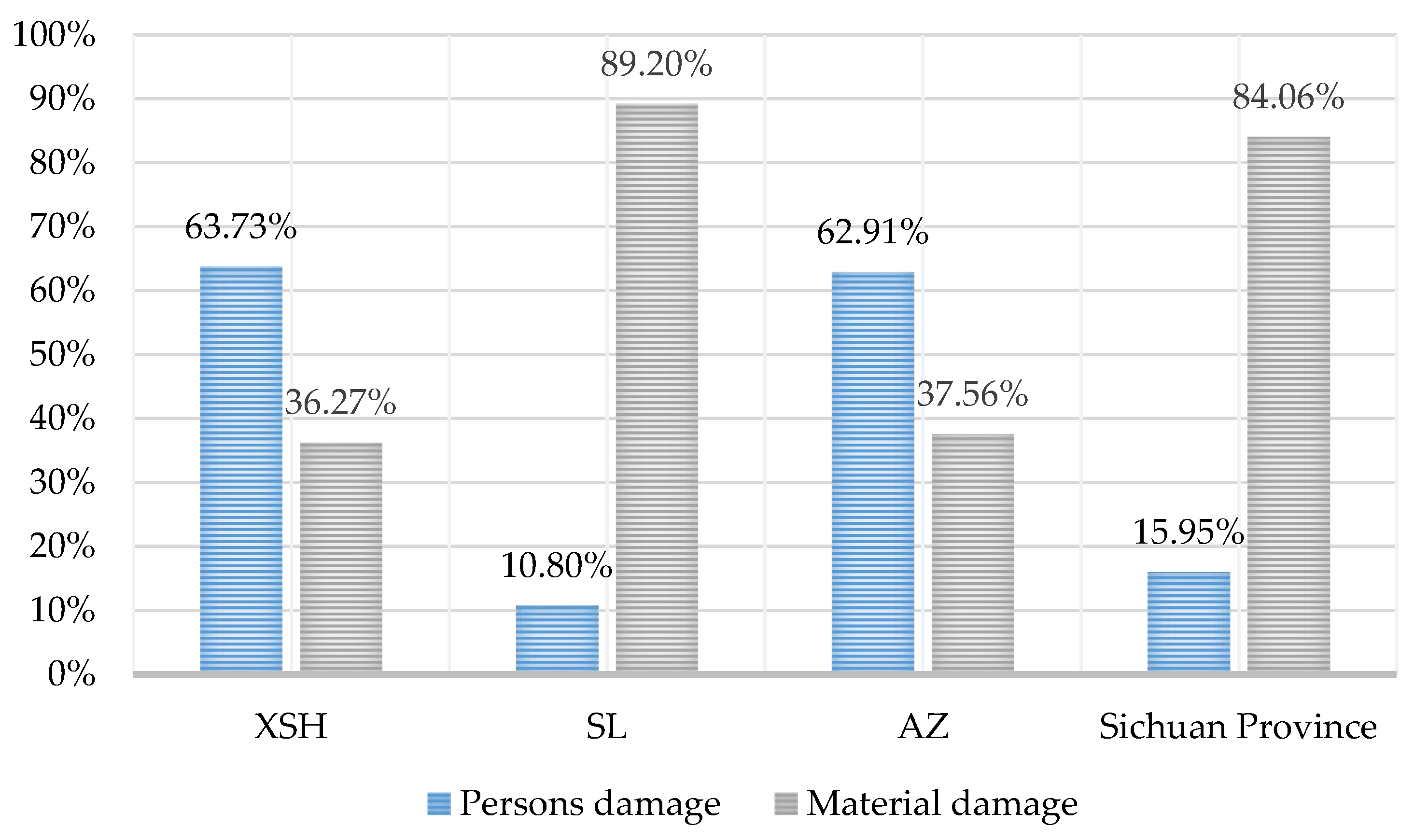
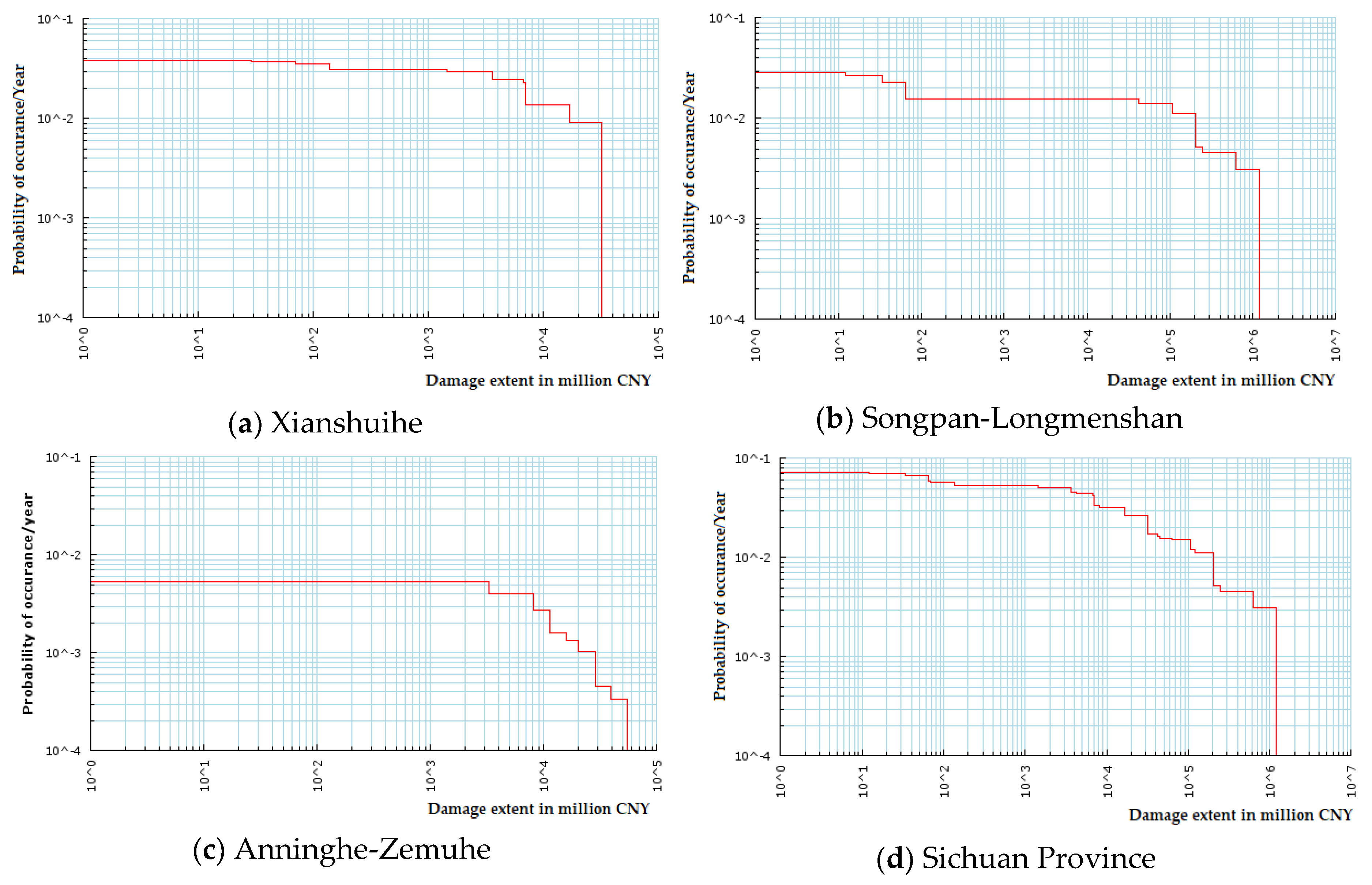
| Seismic Zone | Historical Earthquake | Death Toll (person) | Material Damages (CNY/million at Current Prices) | Data Sources | |
|---|---|---|---|---|---|
| Year | Ms | ||||
| Xianshuihe | 1725 | 7.2 | - | - | [39] |
| 1786 | 7.75 | - | - | [41] | |
| 1816 | 7.5 | 2945 | - | [39,41] | |
| 1893 | 7.2 | 211 | - | [39,41] | |
| 1904 | 7.0 | 565 | - | [41] | |
| 1923 | 7.25 | 4500 | - | [41] | |
| 1955a | 7.5 | 94 | 0.405 | [41] | |
| 1967 | 6.8 | 39 | 0.06 | [41] | |
| 1973a | 7.6 | 2199 | 0.889 | [41] | |
| 1981 | 6.9 | 126 | 32.28 | [41] | |
| Songpan-Longmenshan | 1630 | 6.7 | - | - | [39] |
| 1657 | 6.5 | - | - | [39] | |
| 1713 | 7.0 | - | - | [39] | |
| 1748 | 6.5 | - | - | [39,41] | |
| 1933 | 7.5 | 6865 | - | [41] | |
| 1960 | 6.75 | - | 0.385 | [41] | |
| 1973b | 6.5 | - | - | [39,41] | |
| 1976 | 7.2 | 41 | 0.046 | [41] | |
| 2008 | 8.0 | 69,227 | 845,100 | [42] | |
| 2013 | 7.0 | 198 | 42,113.76 | EM-DAT | |
| 2017 | 7.0 | 29 | 3375.9 | EM-DAT | |
| An’ninghe-Zemuhe | 814 | 7.0 | - | - | [39,41] |
| 1489 | 6.7 | - | - | [39] | |
| 1536 | 7.5 | - | - | [39,41] | |
| 1732 | 6.7 | - | - | [39] | |
| 1850 | 7.5 | 23,860 | - | [41] | |
| 1952 | 6.75 | 236 | 2.206 | [41] | |
| 1955b | 6.75 | 728 | 8.44 | [41] | |
| Event Year | CPI 1 (1952 = 100) | Per capita 2 GDP/CNY | Population 3 /million | Material Damage Normalized to 2017 CNY/billion | Death Toll Normalized to 2017/person |
|---|---|---|---|---|---|
| 1816 | 21.436 | 11,406 | |||
| 1850 | 44.164 | 44,852 | |||
| 1893 | 47.761 | 367 | |||
| 1904 | 48.227 | 973 | |||
| 1923 | 52.547 | 7110 | |||
| 1933 | 55.897 | 10,196 | |||
| 1952 | 100.0 | 69 | 46.285 | 26.164 | 423 |
| 1955a | 105.1 | 90 | 48.587 | 3.338 | 161 |
| 1955b | 105.1 | 90 | 48.587 | 69.560 | 1244 |
| 1960 | 119.4 | 118 | 48.886 | 2.117 | - |
| 1967 | 134.0 | 169 | 56.073 | 0.180 | 58 |
| 1973a | 137.9 | 191 | 64.636 | 1.978 | 2824 |
| 1973b | 137.9 | 191 | 64.636 | - | - |
| 1976 | 140.5 | 238 | 69.733 | 0.075 | 49 |
| 1981 | 164.1 | 337 | 72.156 | 30.641 | 145 |
| 2008 | 830.8 | 15,495 | 81.380 | 3055.499 | 70,622 |
| 2013 | 958.9 | 32,617 | 81.070 | 62.911 | 203 |
| 2017 | 1021.8 | 44,651 | 83.020 | 3.376 | 29 |
| Seismic Zone | Scenario | ||
|---|---|---|---|
| 1 (Ms ≥ 6.5) | 2 (Ms ≥ 7.0) | 3 (Ms ≥ 7.5) | |
| Xianshuihe | 26 | 32 | 64 |
| Songpan-Longmenshan | 35 | 65 | 194 |
| An’ninghe-Zemuhe | 163 | 380 | 571 |
| Y | X | |
|---|---|---|
| X1 | X2 | |
| Y1 | 0.30 | 0.58 |
| Y2 | 0.12 | 0 |
| Seismic Zones | Damages | Scenario | |||
|---|---|---|---|---|---|
| Min of S1 | Max of S1/Min of S2 | Max of S2/Min of S3 | Max of S3 | ||
| Xianshuihe | Death Toll | 0 | 58 | 2280 | 11,406 |
| Material Damage | 0 | 0.180 | 9.034 | 30.641 | |
| Songpan-Longmenshan | Death Toll | 0 | 29 | 16,220 | 70,622 |
| Material Damage | 0 | 0.075 | 624.796 | 3055.499 | |
| An’ninghe-Zemuhe | Death Toll | 0 | 423 | 15,507 | 44,852 |
| Material Damage | 0 | 26.164 | 47.862 | 69.560 | |
| Measure | Costs (millions in CNY) | ||
|---|---|---|---|
| Investment Costs (IC) | Annual Maintenance Costs (Cm) | Annual Operating Costs (Co) | |
| IDRECS | 705.43 | 11.75 | 11.75 |
| DRMRS | 913.55 | 15.23 | 15.23 |
| DES | 1461.24 | 24.35 | 24.35 |
| Seismic Zones | Cost-Effectiveness | Risk Reduction and Mitigation Measures | ||
|---|---|---|---|---|
| DES | DRMRS | IDRECS | ||
| Xianshuihe | Annual costs (millions in CNY) | 112 | 70 | 54 |
| Risk reduction (millions in CNY) | 146 | 97 | 82 | |
| Benefit/cost ratio | 1.30 | 1.39 | 1.51 | |
| Songpan-Longmenshan | Annual costs (millions in CNY) | 112 | 70 | 54 |
| Risk reduction | 182 | 117 | 91 | |
| Benefit/cost ratio | 1.62 | 1.67 | 1.69 | |
| An’ninghe-Zemuhe | Annual costs (millions in CNY) | 112 | 70 | 54 |
| Risk reduction | 116 | 74 | 62 | |
| Benefit/cost ratio | 1.03 | 1.06 | 1.16 | |
© 2019 by the authors. Licensee MDPI, Basel, Switzerland. This article is an open access article distributed under the terms and conditions of the Creative Commons Attribution (CC BY) license (http://creativecommons.org/licenses/by/4.0/).
Share and Cite
Shi, Y.; Seeland, K. Using RISKPLAN for Earthquake Risk Assessment in Sichuan Province, China. Sustainability 2019, 11, 1812. https://doi.org/10.3390/su11061812
Shi Y, Seeland K. Using RISKPLAN for Earthquake Risk Assessment in Sichuan Province, China. Sustainability. 2019; 11(6):1812. https://doi.org/10.3390/su11061812
Chicago/Turabian StyleShi, Yan, and Klaus Seeland. 2019. "Using RISKPLAN for Earthquake Risk Assessment in Sichuan Province, China" Sustainability 11, no. 6: 1812. https://doi.org/10.3390/su11061812
APA StyleShi, Y., & Seeland, K. (2019). Using RISKPLAN for Earthquake Risk Assessment in Sichuan Province, China. Sustainability, 11(6), 1812. https://doi.org/10.3390/su11061812




